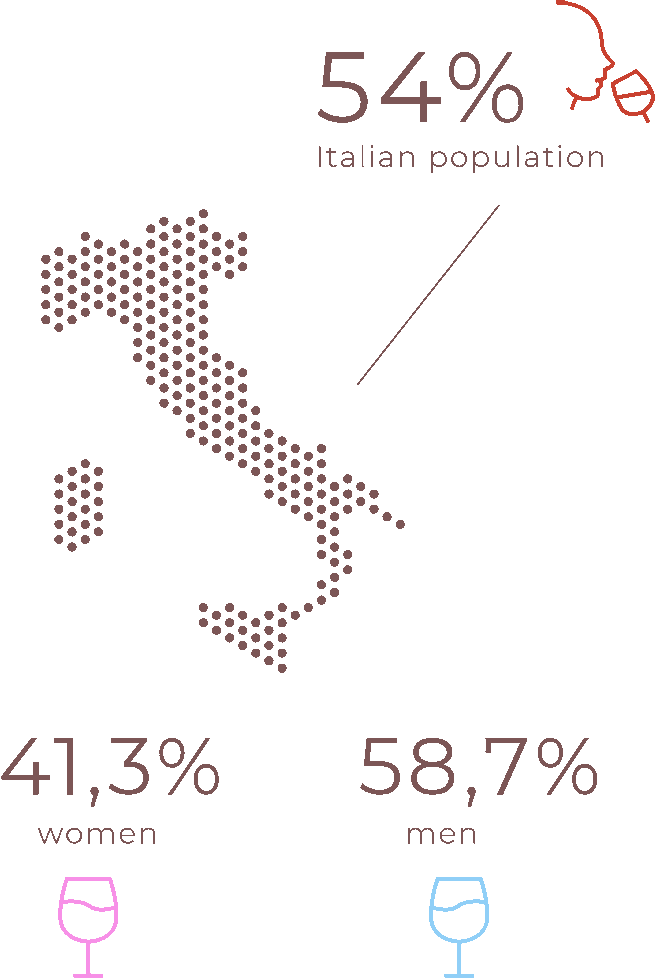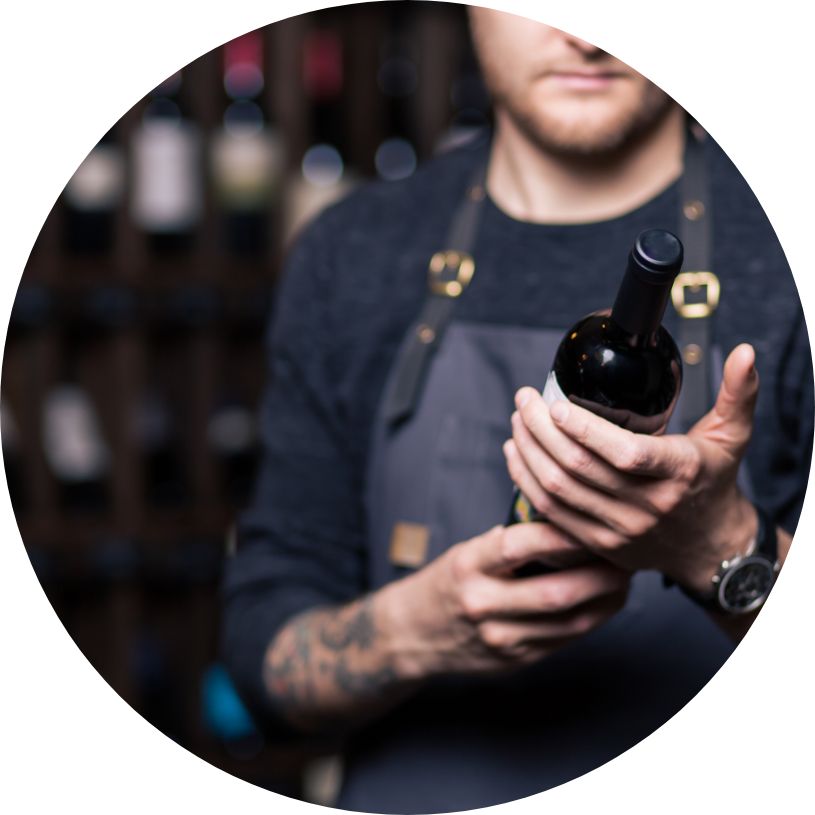From the stage to real life: how to bring improvisation and respect for ourselves and others to the forefront... bringing out everybody’s value.
Not loyal but an expert, occasional drinker and a woman: the identikit of the wine drinker has changed radically over the last few years. Why? Because the consumption of wine evolves and changes at the same pace as our lifestyle.

The market might be fragmented and ever-changing but Benedetto Marescotti - an expert in wine and markets for over twenty years and Head of the Marketing Department of the CAVIRO Group - prefers to consider this a new balance generated by diversity.
“If in the postwar period and up to the 1960s wine was considered just like food, once it left the countryside and conquered the city it found new avenues of consumption. Also, wine no longer was homemade or bought from local farmers; meals were increasingly consumed outside the home and the flask was replaced by the bottle or by the glass, chosen according to taste, occasion, and label.”
Rushing through history to reach our times, we find wine competing with many more beverages compared to the past, from beer - no longer linked to the areas where it was invented and created - to cocktails, these too free from cocktail bars and now used for pairing wine and food.
“For many, today, wine is no longer a part of the daily meals but rather a pleasure,” says Marescotti. “Indeed, nowadays the most important convivial moment of the day are not meals but aperitifs. After all, it is exactly during aperitifs that we meet, chat, discuss our days - just like we did once around the dinner table. It is usually men who are the greatest wine consumers but the interesting fact is that wine consumption among women is constantly increasing, and the latter are more oriented towards a new type of wine, like rosé and sparkling varieties.”

According to the 2019 ISTAT Report on the consumption of wine and alcoholic beverages in Italy, there are 29.5 million wine consumers, equal to 54% of the Italian population.
Of these, women are 41.3% and men 58.7%. Daily consumers drop to 42% (they were 54.6% in 2008) while occasional consumers are 58%.
In such a diverse and changing scenario, wine companies need to adapt and create a relationship with the market.
CAVIRO does this at a product level.
“If in the early 2000s barrique wines were fashionable and a glass was sipped a little at a time, meditating on aromas and aftertaste, today wine is for more ‘immediate’ drinking. Indeed, consumers want to perceive the notes from the first sip rather than inspect the glass to identify aromas that require specific skills and expertise. These wines - fresher, ‘easier’, and fruitier - are better suited to contemporary consumption, and to our tables.”
But that’s not all, as CAVIRO is taking steps even as far as marketing and communication are concerned.
“Modern consumers are attentive and demanding; they are more informed and aware. Not indifferent to fads, they are also selective, comparing labels, increasing their knowledge, and thus requiring a lot of data. Basically, they want to know everything and they motivate their choice by acquiring this information. Wine is therefore linked inextricably with other factors as consumers wonder what they are buying and who they are buying from.”
Last but not least, wine is becoming more and more interesting to always more people, and it is getting intertwined with food and cooking, travel, and also sustainability and the environment.
“If we think that, in a medium-sized retail outlet, there are at least 300 different labels on the shelf, it is easy to see that we can’t reasonably expect to know every single one.”
So? How do you choose wine?
“When you don’t know the producer, you usually choose based on the area. The label is certainly a factor that helps in the decision process, as is the price range which is considered a valuable indicator although not always a guarantee.”

All in all, it is the culture of wine that has grown, the curiosity to know the aspects of this product - from its production to its arrival on our tables. With wine, we are witnessing a turning point in the market in which consumers are no longer a single and monolithic entity - clearly, not all consumers are the same and this segmentation allows the market to welcome and include new products.
With this in mind, we need to see the lack of loyalty in consumers - no longer tied to a single label or cellar or terroir but rather searching for new products and producers - as a way to generate awareness, comparisons, experience. But more importantly this generates a new, important balance where diversity combined with research and development becomes a great opportunity to start more sustainable productions processes.
These new consumers’ needs thus can be concretely translated into a push for wine producers to effectively respond to the growing demand for sustainability not only in terms of crops but also when it comes to packaging, transport, distribution, and communication.
Storytelling has thus become storybuilding because the content that consumers require is one that can create real revolutions in production and research, both necessary changes in a market that can really welcome them and opportunities for innovation that arise from the ever-growing need for balance.
From the stage to real life: how to bring improvisation and respect for ourselves and others to the forefront... bringing out everybody’s value.
Ethics and aesthetics - the new frontier of fashion. How to have clothes that are sustainable and with a low environmental impact? Thanks to the idea of modularity and to natural and regenerated fabrics.
